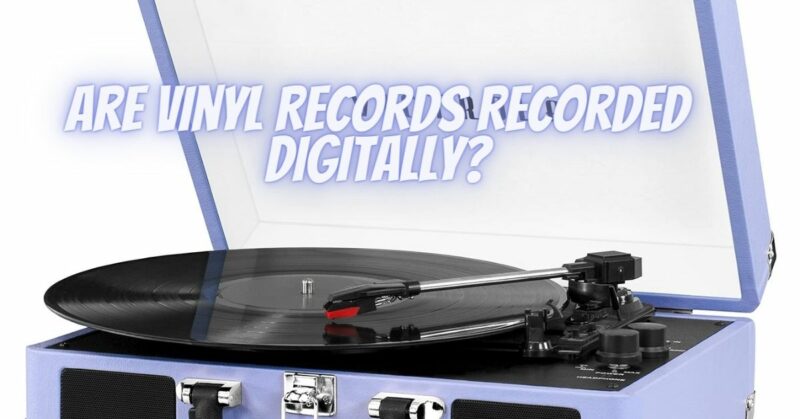Vinyl records, with their iconic grooves and analog warmth, have been a staple of the music industry for decades. However, the processes involved in creating vinyl records have evolved with technology. This has led to a common question among vinyl enthusiasts: Are vinyl records recorded digitally? In this article, we will explore the intricate relationship between analog vinyl and digital technology.
Understanding the Recording Process
To understand the connection between vinyl records and digital recording, it’s crucial to comprehend the stages of music production:
- Recording: Musicians and recording engineers capture performances in a studio environment. Historically, this process was purely analog, with sound waves directly impacting microphones and analog tape machines.
- Mixing: In the mixing stage, multiple audio tracks are combined and balanced to create the final stereo or mono mix. Analog mixing boards were traditionally used for this process.
- Mastering: Mastering engineers prepare the final mix for duplication. This includes equalization, compression, and sequencing. In the past, mastering was primarily done using analog equipment.
- Vinyl Cutting: To create the master for vinyl production, the final mastered audio is transferred to a vinyl cutting lathe. This lathe engraves the grooves onto a lacquer master disc, which serves as the template for vinyl pressing.
Digital Recording and Vinyl
While the early days of vinyl records relied entirely on analog recording and mastering, technological advancements have introduced digital components into the process. Here’s how digital technology has been integrated:
- Digital Recording: Many modern music recordings are captured digitally, using digital audio workstations (DAWs) and high-resolution digital converters. This digital recording process allows for precise editing, mixing, and manipulation of audio.
- Digital Mastering: Mastering engineers often use digital tools and software to enhance the final mix. Digital mastering provides greater control and flexibility in fine-tuning the audio.
- Vinyl Cutting: The transfer of audio from digital formats to vinyl is facilitated by digital-to-analog converters (DACs). These converters translate the digital audio into analog signals that the cutting lathe can engrave onto the lacquer master disc.
Balancing Analog and Digital
The relationship between vinyl records and digital technology is a blend of the old and the new. While digital recording and mastering are prevalent in contemporary music production, the final step—the creation of the vinyl record—returns to analog roots.
The decision to incorporate digital technology into the process often depends on various factors, including the preferences of artists, engineers, and producers. Some artists may opt for a purely analog approach to maintain a vintage sound, while others embrace digital tools for their convenience and precision.
In essence, vinyl records serve as a bridge between analog and digital worlds, honoring the rich history of analog recording while adapting to the modern digital landscape.
Conclusion
Vinyl records are a testament to the enduring appeal of analog sound, and their production process reflects a harmonious coexistence with digital technology. While many elements of modern music production are digital, vinyl records preserve the analog essence of music in their grooves, offering listeners an authentic and tactile connection to the art of sound. The result is a timeless medium that bridges the past and the present, allowing music enthusiasts to savor the best of both worlds.


